
- Custom Variable Widget
- Priority Matrix
- Heatmap Widget
- Grid Widget
- Weighted mean widget
- Comment List widget
- Widget Filters
- Ranking List Widget
- Distribution Chart
- NPS Widget
- Trend Widget
- Word Cloud Widget
- Cross tab widget
- KPI Comparison Widget
- Bubble chart
- Custom Metric Trend Chart
- Trend Comparison Widget
CX - Segment Overview
A segment represents your business entities as mapped within the system. By default, a Main Segment is created when your account is set up. You can add Child Segments under this main segment to represent branches or sub-units. If your business structure requires additional levels, you can continue to map them accordingly. For example: If you own McDonald’s, McDonald’s US could be your Main Segment, and its various branches across the US would be added as Child Segments.
Navigate to Login >> CX >> Admin >> Company Structure >> Segments

When the user visits segment page, there are various actions which can be performed on this page. Following are the columns displayed on the page:
- Name: The column displays the name of segment
- Code: The column consists of segment code. This code has to be unique for each segment added. It is important to have the code as all transactions and data are mapped to specific segment through segment code
- Managers: The column shows the count of supervisors added to the specific segment
- Location: It shows the information about where a segment is located
- Parent: The column represents the name of parent segment under which the respective segment is added
- Username/Key: This column is only visible if the Offline Survey option in Mobile tab under Settings is turned On. From this column user can map the username/key for offline data collection.
- Actions: From the Action column user can Manage Supervisor, View Detractor Tickets, Add Child segment, Edit and Delete a segment
In addition to the columns, there are search, filter, Import and change view options too.
- On the top right of segment list, there are 2 icons:
- Change View - Clicking the toggle switches the display between Tree View and List View.
- Search - Clicking this enables the search bar, allowing the user to search for a segment.
- Besides the above 2 icons, there is a segment filter dropdown
- At the corner, there is a button - Import segments
Initially there is one segment added to the account. This segment is referred as ‘Main segment’. If you want to add more BU to the system, it can be done through 2 ways:
- Import segments button: Enables you to import segments in bulk
- Add Child option: Add single segment at a time as a child to an already existing segment
- Import segments: There are two options in importing segments
- Manually Adding Bulk segments
- Importing through excel file
- Through Add Child option
- Click Add Child under the Action column
- Add the details of child segment and click Save button
- The new child segment will be added to the list
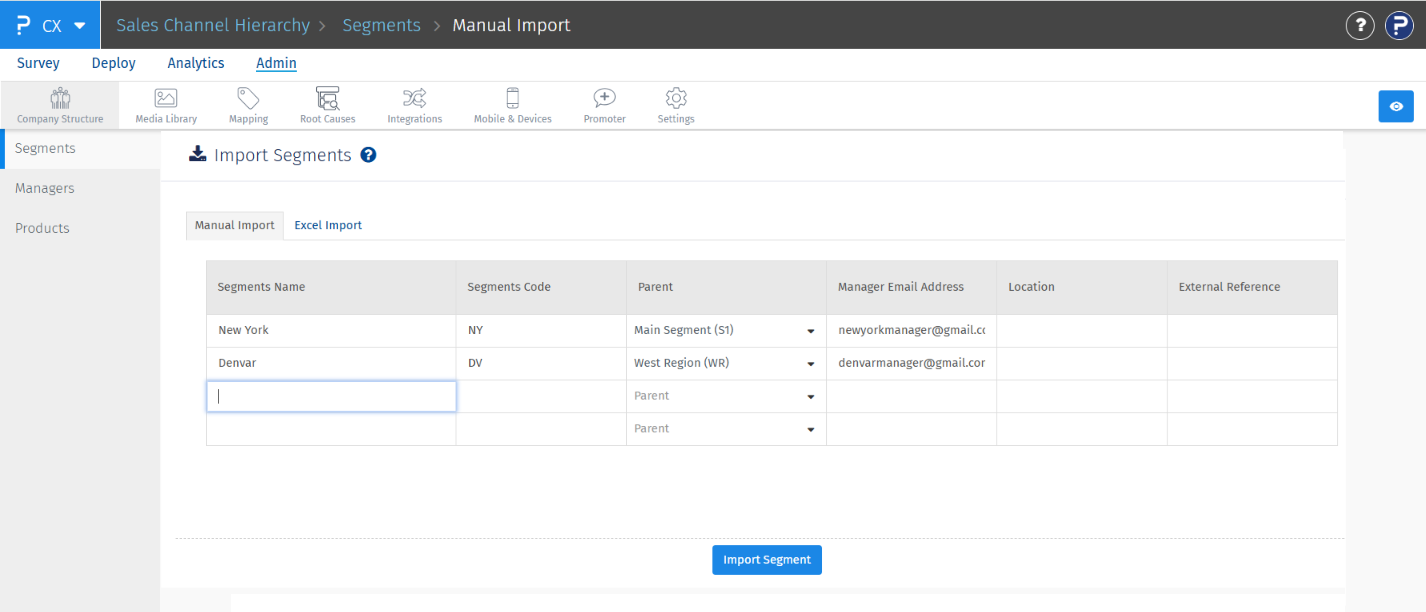
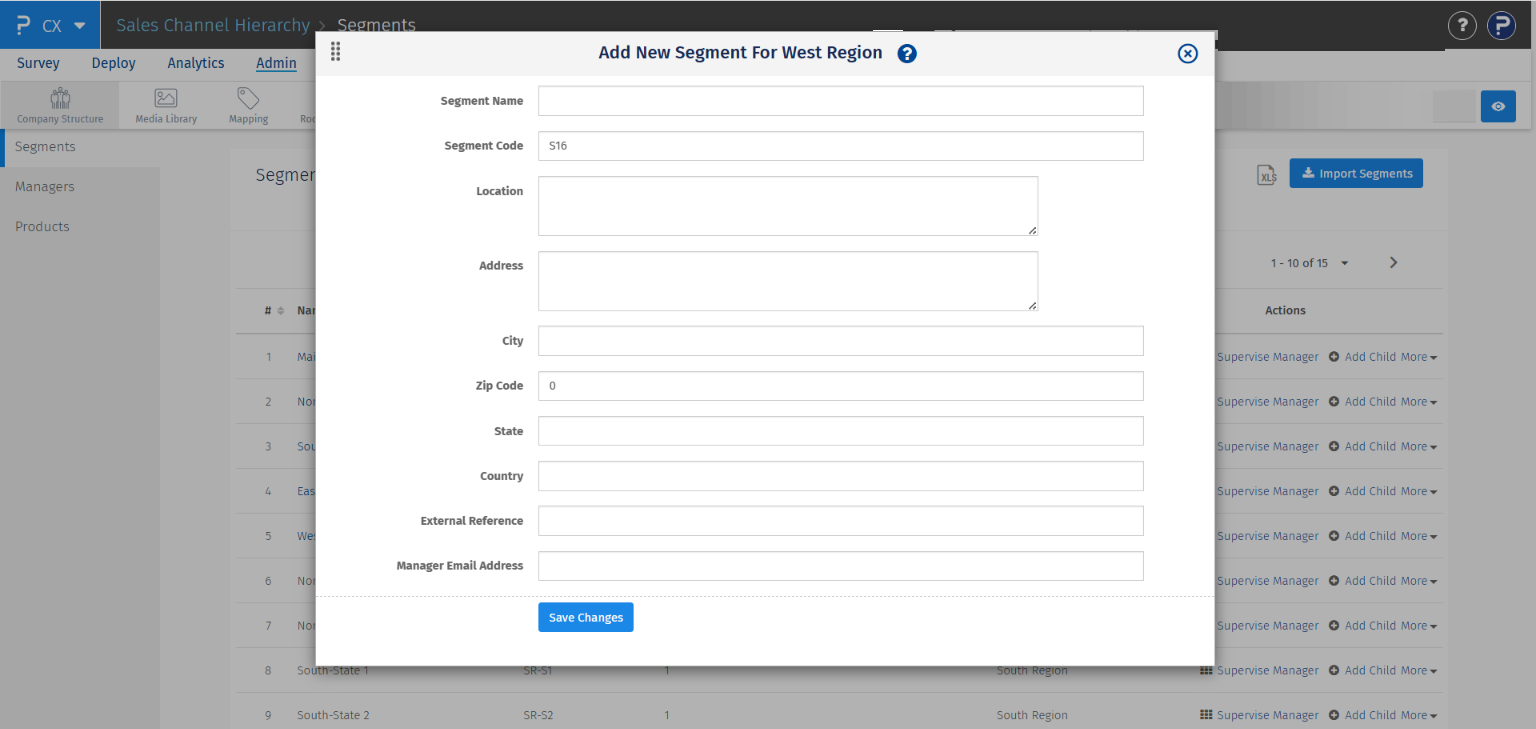
To learn how to add bulk segments, refer to Import segments
Edit a segment
- On the segment list, click More drop down under the action column
- Click Edit option
- Add the details you want to the segment and click Save button
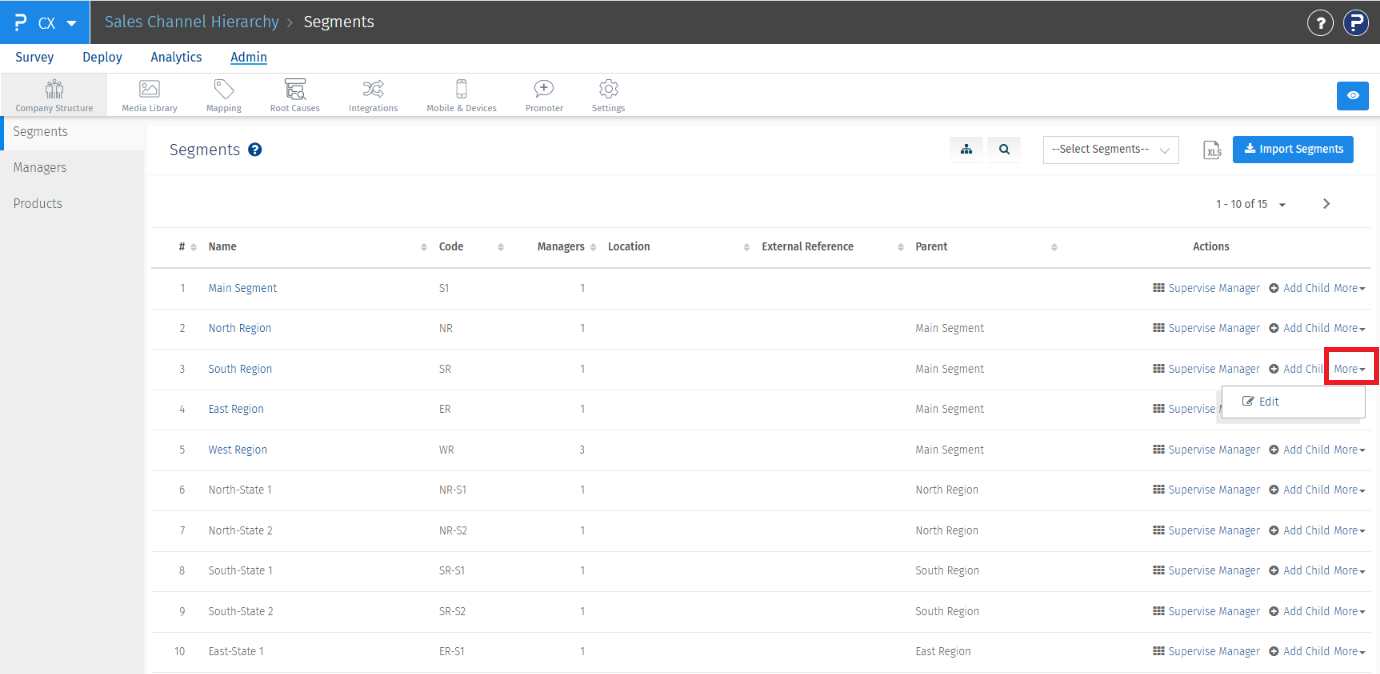
Delete a segment
- On the segment list, click More drop down under the action column
- Click Delete option
Search a segment
- On the segment page, there is a search icon above the segment columns
- Click Search icon
- The search bar will be activated. You and type and press enter to search the results
- The search is based on segment name, code, parent segment
- To reset the search you can click x icon inside search bar, which will reset the segment list and close the search bar
Filter a segment
- On the segment page, there is a Filter drop down above the segment columns
- The filter drop down will show only those segments, which have at least one child segment
- If there are no child segments added, the filter will say No data to display
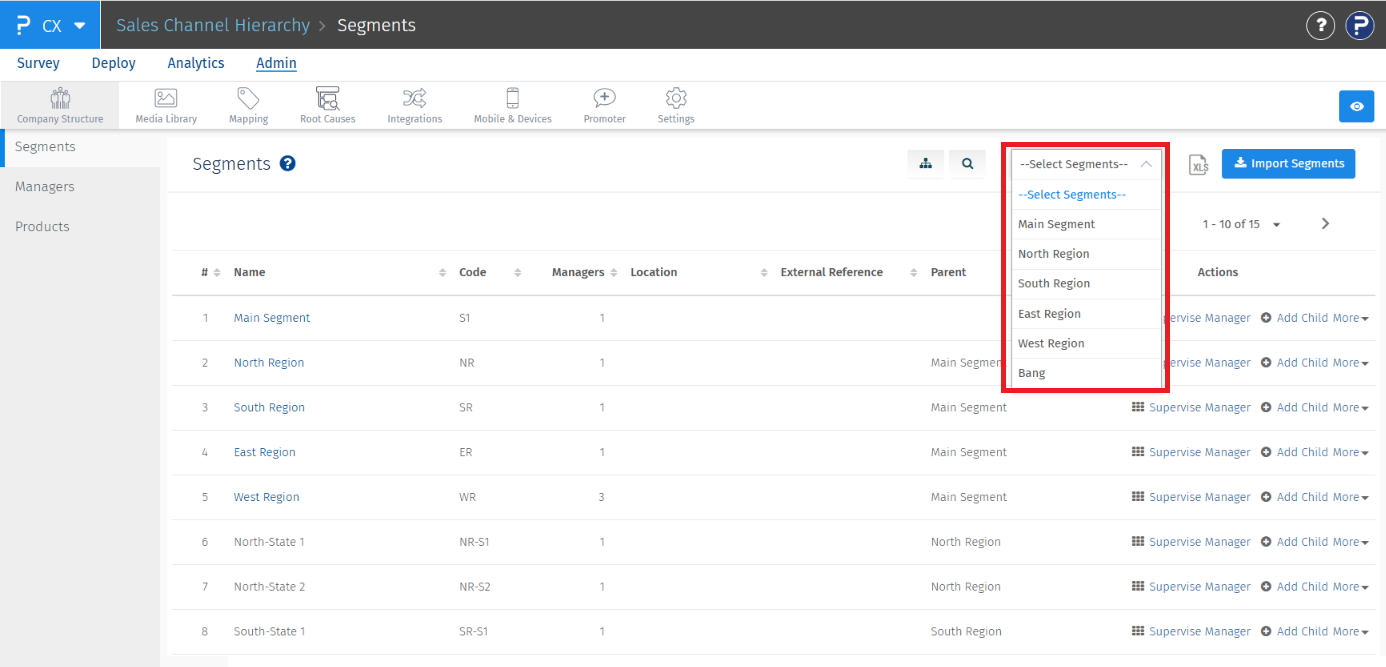
Segment managers are the owners of all the activities happening for that segment. They can perform below operations:
- View Dashboard using Dashboard Portal for their own segment's data
- You can access the list of managers under CX >> Admin >> Company Structure >> Managers
- Manage closed loop tickets assigned to their segment. They can check the closed loop ticket under Action >> Closed loop.
- They are also entitled to receive an email notification when a detractor response is received, provided the proper notification alerts are configured.
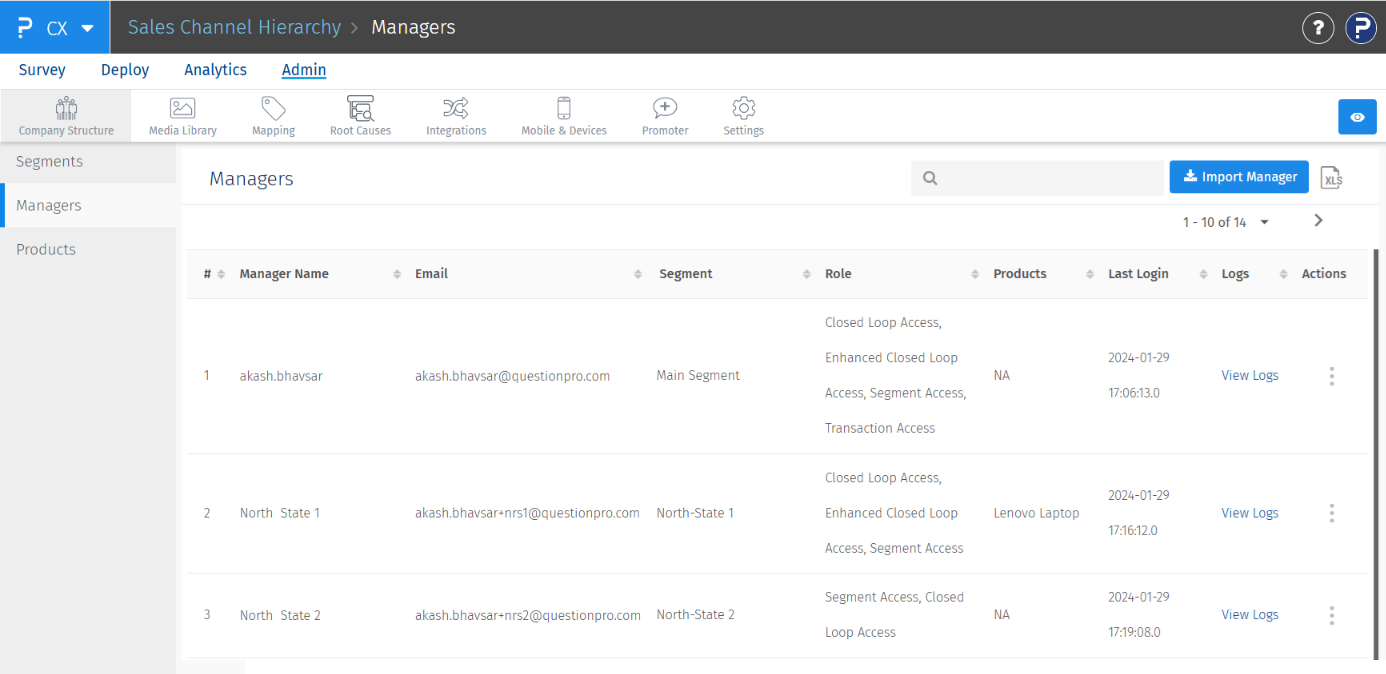
You can click on the Tree viewbutton and switch to the tree mode display
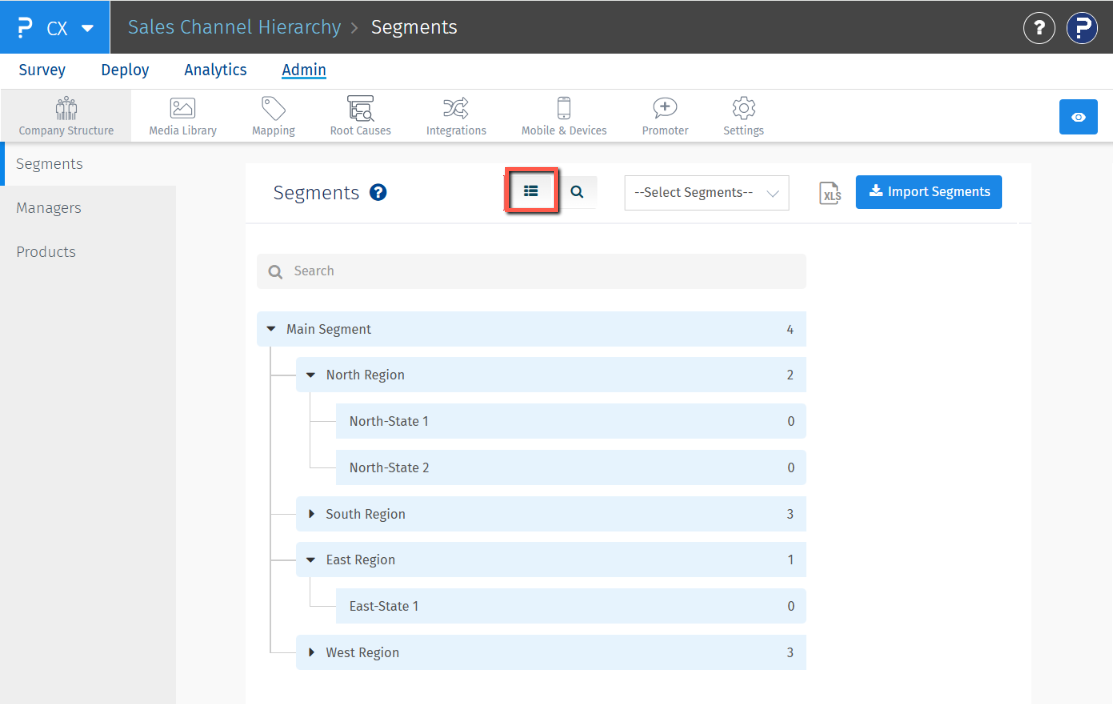
You can click on the Segment Name and expand the view of the child segments

You can search the segment by the name in the search bar on the top
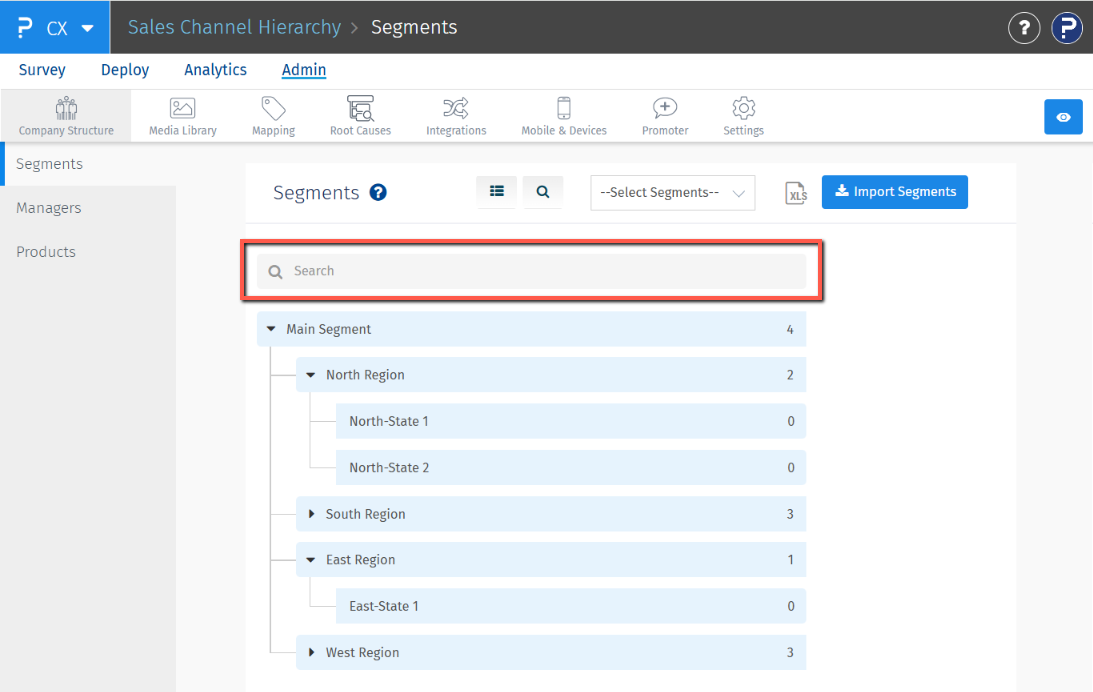
Missing Segment in Transaction:
If a transaction doesn’t include a CX segment, it automatically gets assigned to the Main Segment.
Incorrect Segment Code:
If a transaction is imported with a segment code that doesn’t match any defined segment in the workspace, it gets assigned to the Main Segment.
Deleted Segment:
If a segment is deleted, all past transactions associated with that segment are left without any segment assigned. These transactions won’t be visible when using segment filters.
Custom Variables are special variables used to store additional information which can be passed to the survey. The additional info passed via the variables are stored with the respondents response collected. Variable mapping helps dramatically when you have a lot of variables used in your survey. It helps to work with your own codes instead of using a system syntax (custom1, custom2, etc.,). You can use variable mapping to assign appropriate names to the variables which also appears as the column headers in the reports downloaded.
Segment custom fields are same like custom variables where additional information related to segments can be stored. You can add multiple custom fields for a segment. These segment custom fields are workspace specific and no duplicate names are allowed.
To learn how to add add segment custom fields mapping and access them, refer to Segment Custom Fields Mapping
